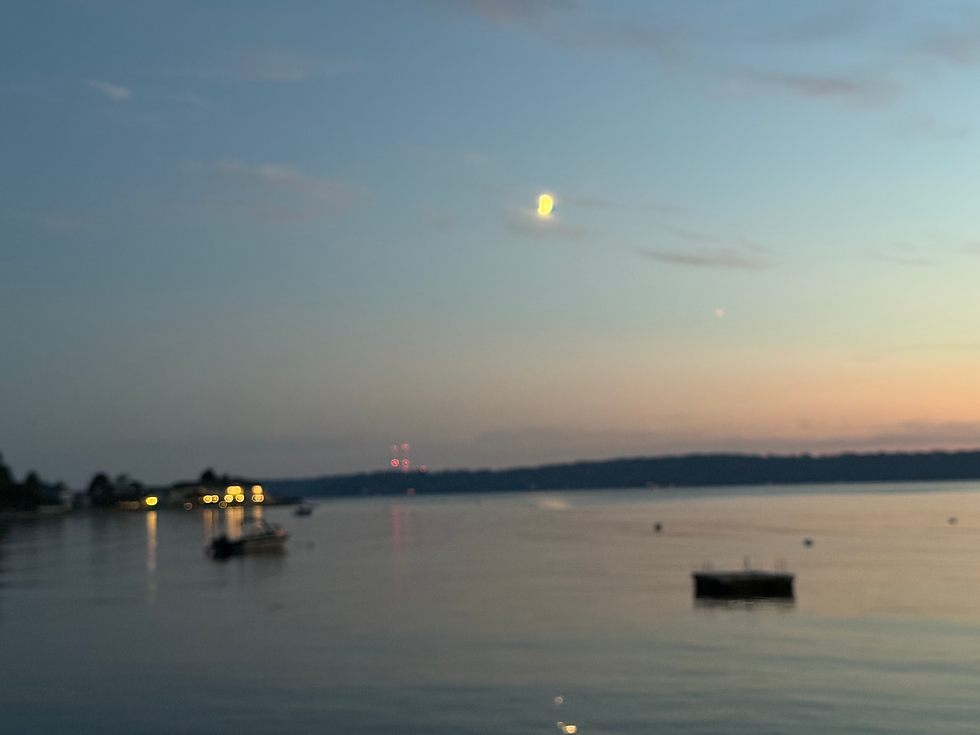Noah, the Flood, and Our Planet: Renewing the Rainbow Covenant
- Congregation Kol Ami
- Oct 22
- 3 min read
D’var Torah in Memory of Rabbi Arthur Waskow z”l
In the days of Noah...
In the days of Noah, Torah tells us, “The Eternal saw that great was humanity’s wickedness on earth” (Genesis 6:5). The earth itself had become nishchatah, corrupted, ruined, not only by human violence but by a breakdown in relationship. The covenant between humanity and creation had been violated. When God instructs Noah to “make yourself an ark” (6:14), it is more than an act of survival. It is a call to rebuild relationship, to partner again with God in preserving life. The ark is the first environmental project, the first act of repair (tikkun) after destruction.
The Flood and Our Time
The waters rise in Genesis, and everything that breathes perishes (7:23). In our time, the waters rise again, through climate disruption, fire, drought, and pollution. But now the flood is of our own making. The fountains of the deep have burst open in the form of melting glaciers, and the floodgates of the sky break forth in superstorms. The ancient story of Noah was never meant as myth alone; it is prophetic memory. As Isaiah declares: “For this is as the waters of Noah to Me” (Isaiah 54:9). The prophet transforms the flood from history into moral warning: God may promise not to destroy the earth again, but there is no promise that we will not destroy it ourselves.
Mutual Covenant: God’s Promise and Ours
After the flood, God places a rainbow in the sky and declares, “This is the sign of the covenant between Me and the earth” (Genesis 9:13). The brit is not a one-sided divine assurance, it is a two-sided partnership. God’s part is restraint: never again to flood the world. Humanity’s part is responsibility: to protect, sustain, and honor life. The Midrash Tanchuma reminds us that the flood came not only from violence but from robbery, from taking what was not ours, from violating the balance of creation. Every act of greed or waste today echoes that ancient theft. Pirkei Avot teaches: “Beloved is the human being, for we are created in the image of God” (Avot 3:18). To be b’tzelem Elohim, in the divine image, is to mirror divine restraint. We, too, must learn to limit, to hold back, to guard what is sacred. The covenant demands not dominion but partnership

.
Rabbi Arthur Waskow z”l: Prophet of the Rainbow
Rabbi Arthur Waskow understood this covenant better than most. He saw the floodwaters of our era, not of rain but of carbon, fire, and melting. He called us to renew the brit between humanity and the web of life. He taught that the mitzvah of our time is tikkun tevel, the healing of the Earth itself. For Waskow, the rainbow was not merely a divine symbol; it was a living sign of interdependence, light refracted through diversity, beauty born of difference. He asked each generation to add its own color to that light, to renew covenant through action. He was, like Noah, a builder, not of an ark, but of a movement. And like Isaiah, he transformed memory into moral awakening.
Our Turn to Uphold the Brit
We are the inheritors of this covenant. God has kept the divine promise, the world still stands. Now the question is whether we will keep ours. Each act of conservation, compassion, and courage renews the rainbow. Each time we protect a river, plant a tree, lift our voices for justice, we are adding color to the bow, repairing what was broken. We are, as Waskow wrote, “midwives of God’s continuing creation.” The floodwaters of destruction are not the end; they are the labor pains of a world waiting to be reborn.
Join us for making the covenant even more real and alive through the work of our hands! Join Kol Ami for a REVERSE tashlich-cleaning up plastics and garbage from the showers of ur precious waterways in the Puget Sound. Reserve your spot on our clean up team Sunday 11/2 at Gas Works Park

May we remember the covenant between heaven and earth, between water and sky. May we, children of Noah, renew it through our choices, our activism, and our love. And may the light of Rabbi Waskow’s vision, the rainbow of justice, peace, and renewal, guide us to become faithful partners in the ongoing creation of this fragile, holy world.





Comments